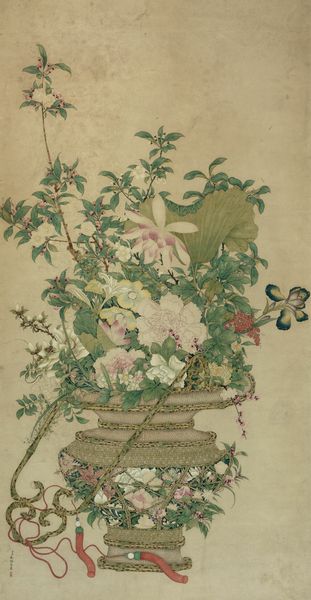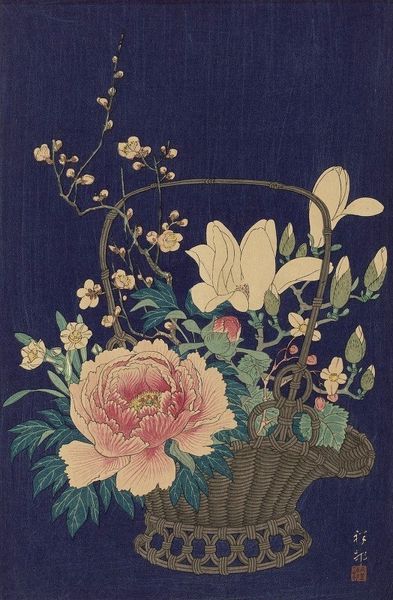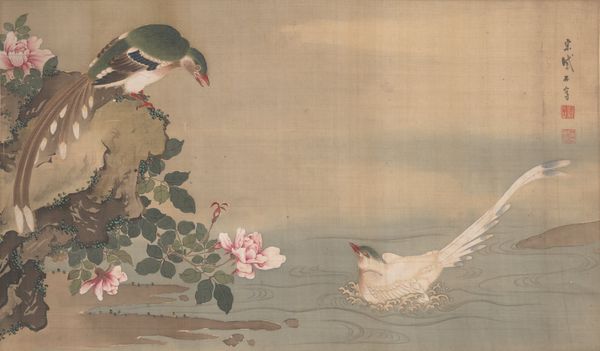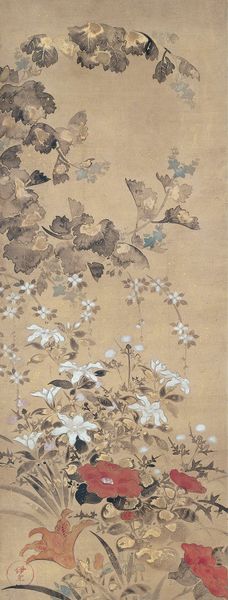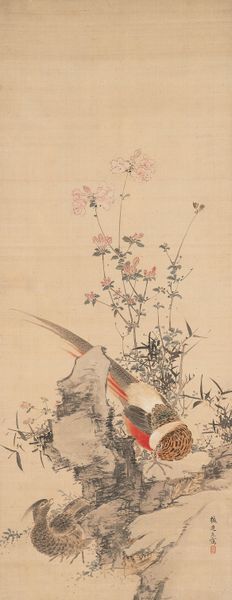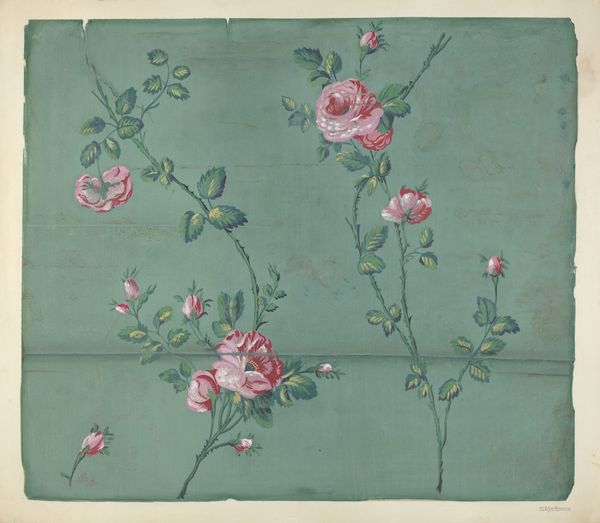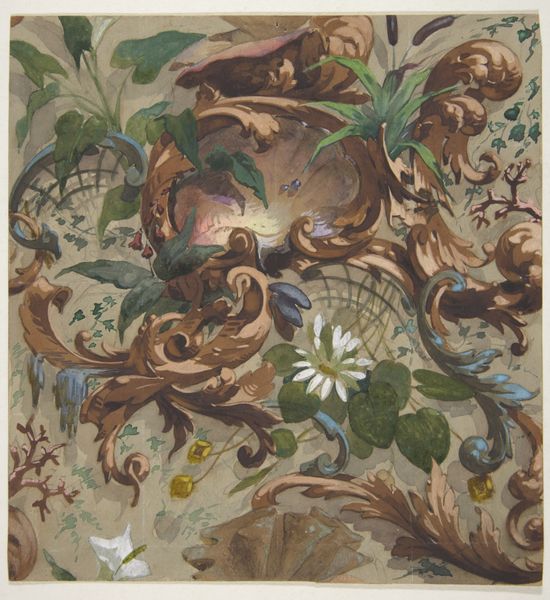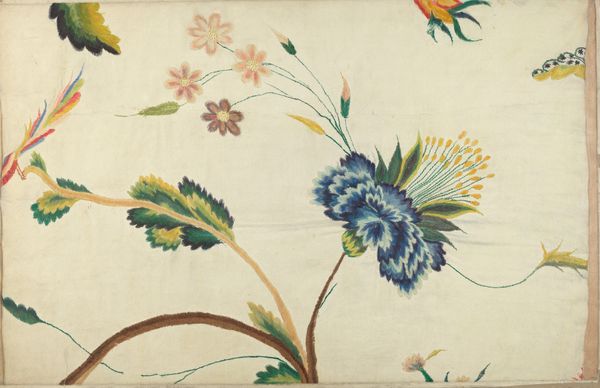
Dimensions: 27.4 × 55.4 cm (10 3/4 × 21 3/4 in.)
Copyright: Public Domain
Curator: Here we have “Fragment” from around 1775-1780, now residing at The Art Institute of Chicago, and it's an exceptional textile piece crafted by Philippe de La Salle. Editor: Wow, okay, I'm immediately transported. There's this hazy, dreamlike quality to it, a kind of faded grandeur, if that makes sense. Curator: It does! The way the watercolor almost bleeds into the textile itself, I see what you mean. La Salle was known for his innovations in textile design. See how he blends floral patterns with avian figures? Editor: I do. The birds definitely caught my eye. Especially that radiant rooster perched amongst the blooms. I think that the rooster must mean something, doesn't it? With flowers too… there must be layers of meanings? Curator: Absolutely. The rooster has always been a symbol of vigilance and resurrection, but flowers during this period in the Rococo age represented different messages like love or beauty. Even wealth. Its inclusion speaks to broader themes of renewal, maybe? This fragment comes across as a celebration of natural abundance through allegorical elements. Editor: Hmm. That symbolism… what strikes me even more is the fragmented nature. That imperfection feels almost modern, in a strange way. Did someone intend for it to look unfinished, you know? Curator: It’s titled "Fragment" and that is likely is exactly what it is. A piece, as in from something larger. Perhaps from a chair cover, or something from a very fine home? Even still, look at the composition, the colors. Editor: It definitely begs to wonder and the textile alone, such care in a fragmented piece, speaks for the culture during that time. This piece is something. It’s amazing. Curator: I completely agree, there’s an enchanting fragility to this “Fragment.” I think the Rococo really captured what luxury should feel like - that there can be grace in impermanence.
Comments
No comments
Be the first to comment and join the conversation on the ultimate creative platform.

